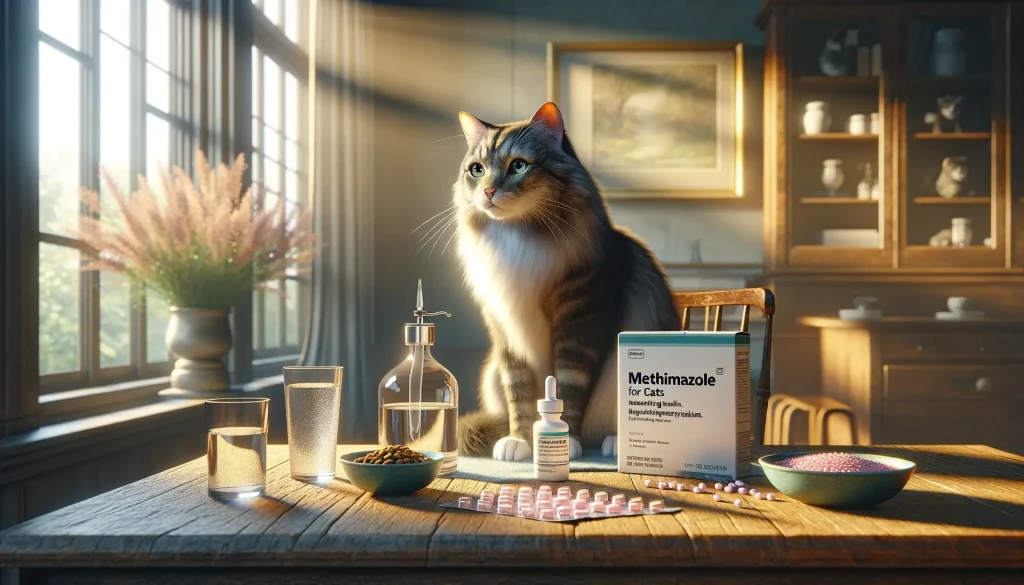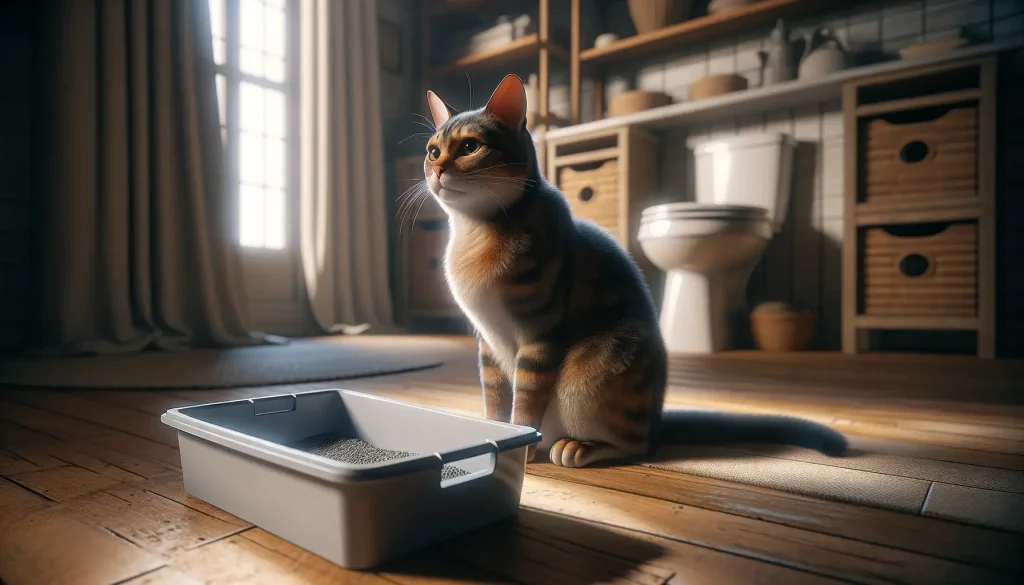
Pac Man vs African Bullfrog
When it comes to choosing a pet frog, two names often rise to the top: the Pac Man Frog and the African Bullfrog. Both have their unique appeals and challenges, making the decision a tough one for potential pet owners. The Pac Man Frog, known for its “charming” aggressiveness and simple care requirements, contrasts sharply with the resilient and potentially colossal African Bullfrog, capable of living well past 50 years and surviving extreme conditions. Whether you’re drawn to the manageable size and colorful appearance of the Pac Man Frog or the robust nature and impressive longevity of the African Bullfrog, understanding their needs and behaviors is crucial. This comparison aims to provide you with the necessary insights to make a well-informed decision, matching your lifestyle and expectations. Let’s dive deeper into what makes each frog unique and find out which could be the best amphibian companion for you.
FAQs: Pac Man Frog vs African Bullfrog
Deciding between a Pac Man Frog and an African Bullfrog can spark many questions. Here are some FAQs to assist you in making an informed choice.
- What size tank do I need for each frog?
For a Pac Man Frog, a 10-gallon tank is ample due to their less active nature. African Bullfrogs, being larger, may require more space as they grow. - Are Pac Man Frogs or African Bullfrogs better for beginners?
Pac Man Frogs are generally considered better for beginners due to their simpler care requirements. African Bullfrogs can live longer and require a more attentive care regimen. - Can I keep other pets with my frog?
Mixing species in the same enclosure is not recommended for either frog. It can lead to stress, illness, or even death. - How long do each of these frogs live?
Pac Man Frogs can live up to 20 years, while African Bullfrogs have a lifespan that can exceed 50 years with proper care. - What do Pac Man Frogs and African Bullfrogs eat?
Pac Man Frogs are voracious eaters, enjoying a diet of crickets and occasional small mice. African Bullfrogs can eat a similar diet but may also consume larger prey due to their size. - How much maintenance do these frogs require?
Pac Man Frogs require relatively low maintenance. African Bullfrogs, with their longer lifespan and potential for larger size, may require more frequent habitat cleanings and health monitoring.
Choosing the right frog involves assessing your lifestyle, space, and the commitment you’re willing to make. Whether you lean towards the charismatic Pac Man Frog or the resilient African Bullfrog, both can make fascinating pets with the right care and attention. Dive into frog ownership informed and excited about the unique characteristics of these remarkable amphibians.
Unique Care Needs of Pac Man and African Bullfrogs
Deciding between a Pac Man Frog and an African Bullfrog is not just about which one seems cooler. It’s about understanding their distinct care requirements to ensure a healthy and happy pet. Let’s break down the care needs of these popular amphibians.
| Care Category | Pac Man Frog | African Bullfrog |
|---|---|---|
| Habitat Size | 10-gallon tank | Larger, based on growth |
| Lifespan | Up to 20 years | Can exceed 50 years |
| Diet | Crickets, occasional small mice | Similar, but can include larger prey |
| Activity Level | Less active | More robust, can be very active |
| Maintenance | Relatively low | More frequent habitat cleanings, health checks |
The Pac Man Frog, known scientifically as Ceratophrys ornata, thrives in a smaller, warm environment with enough substrate for burrowing. Their famous “salad bowl” size and bright colors make them a visually appealing choice for many. But don’t be deceived by their size; these frogs are voracious eaters with a diet that can include crickets and occasional small mice. They’re generally diurnal, meaning they’re most active during the day—an appealing trait for pet owners who like to observe their pets’ activities.
On the other hand, the African Bullfrog (Pyxicephalus adspersus) is a testament to resilience and longevity. Living well past 50 years, these amphibians can grow quite large, demanding more space as they age. They are known for their impressive ability to survive under harsh conditions, including enduring prolonged periods of dormancy during droughts. African Bullfrogs have a robust nature and require a more attentive care regimen that includes monitoring their health and ensuring their habitat is clean and well-maintained.
Both the Pac Man and African Bullfrogs make fascinating pets, each bringing a unique set of requirements and rewards to the table. Whether you’re drawn to the more manageable and colorful Pac Man Frog or the resilient and long-living African Bullfrog, ensuring you can meet their specific care needs is key to a healthy, happy amphibian companion.
Remember, the choice between these two remarkable frogs should be guided not just by preference but by a thoughtful consideration of their care needs, lifespan, and the commitment you’re ready to make. With the right knowledge and preparation, either frog can be a rewarding addition to your home.
| Pac Man Frog | |
|---|---|
| Lifespan | 6-10 years in captivity |
| Size | 4 to 7 inches in diameter |
| Diet | Insects, small rodents, and even other small frogs |
| Housing | Warm, humid terrarium with a water dish |
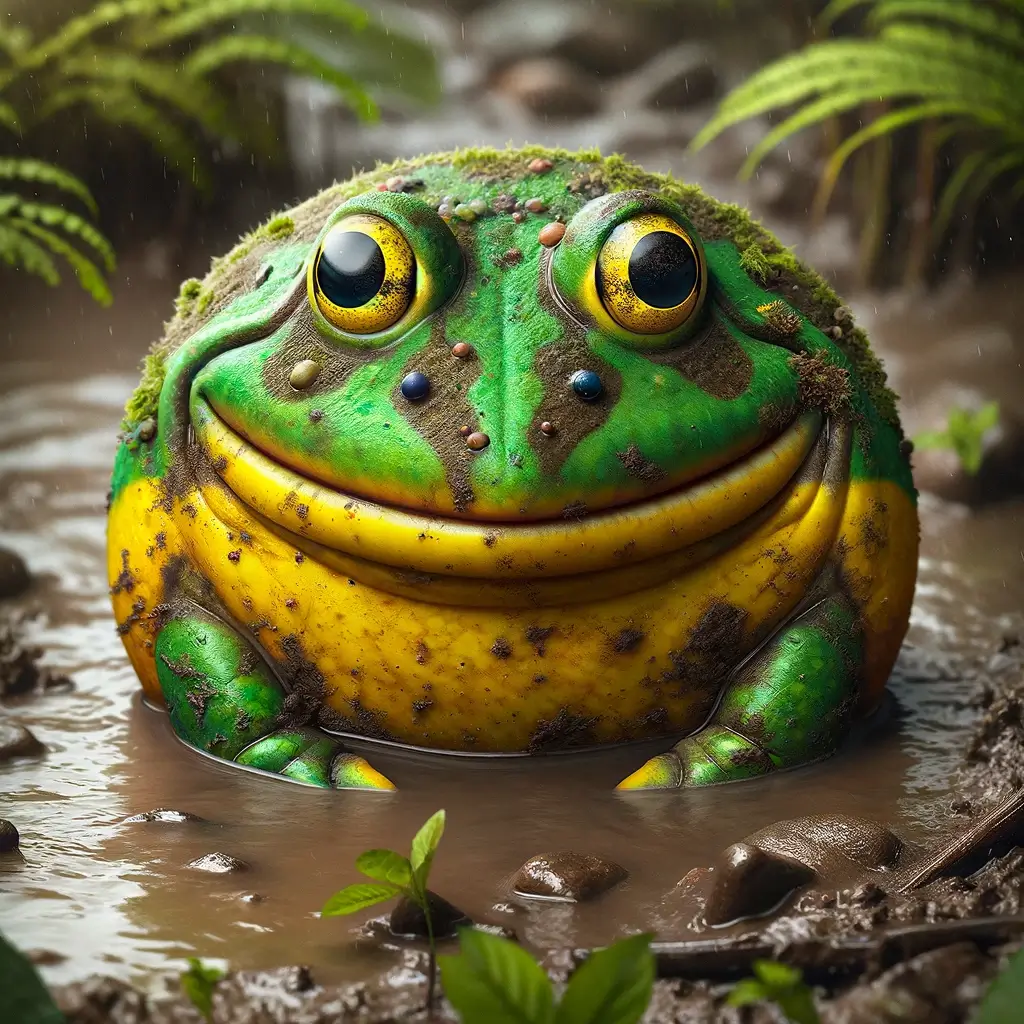
| African Bullfrog | |
|---|---|
| Lifespan | 20-30 years in captivity, up to 35 years reported |
| Size | 8 to 9 inches in length, can weigh up to 2 kg |
| Diet | Insects, fish, small mammals, reptiles, and other frogs |
| Housing | Large terrarium with both land and water areas, requires regular cleaning |
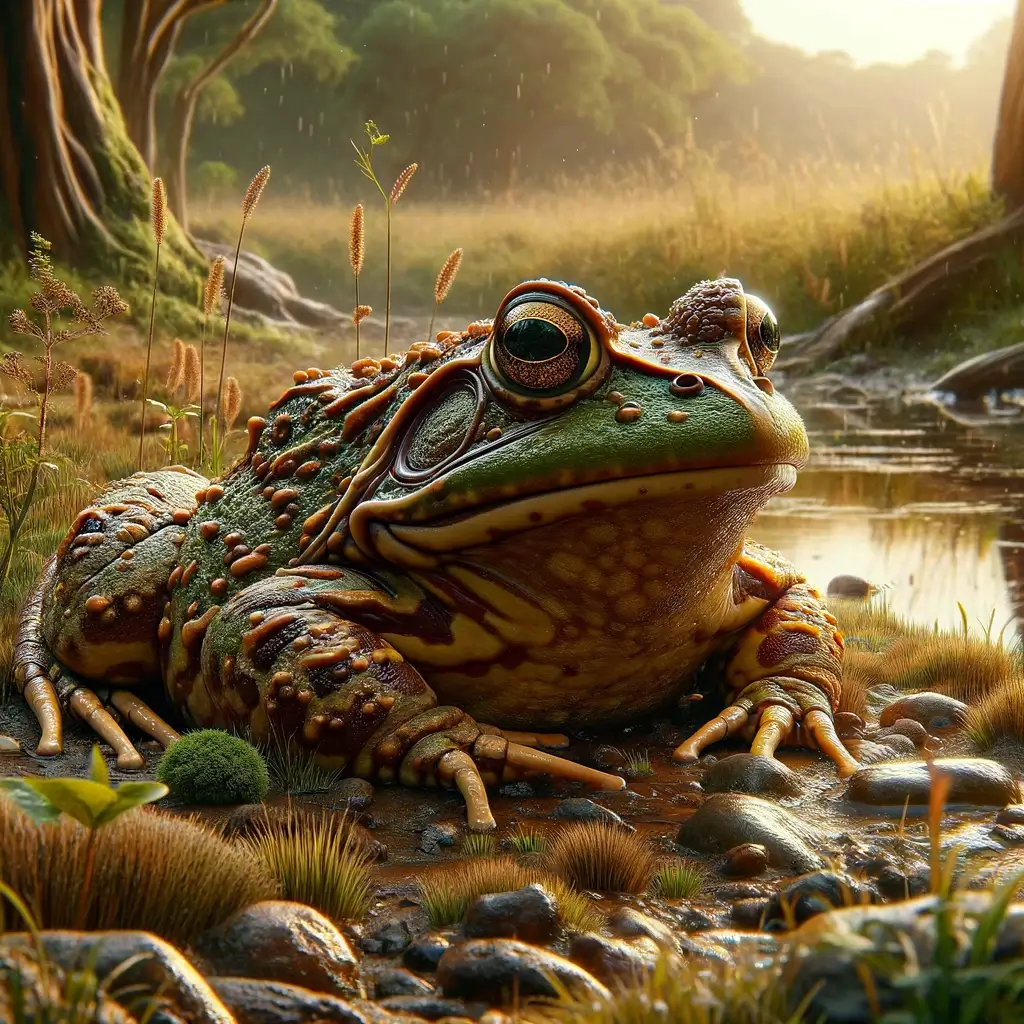
Fun Facts about Pac Man and African Bullfrogs
Let’s dive into some fun facts about the Pac Man Frog and African Bullfrog. These tidbits aim to entertain and enlighten you about the unique traits and behaviors of these amphibians.
- The Pac Man Frog gets its name from the popular video game character due to its round shape and large mouth, which resembles the game’s protagonist – always ready to eat.
- African Bullfrogs are known for their protective parenting. Males guard the young tadpoles, creating channels in the mud to ensure they have access to water.
- An adult Pac Man Frog can eat mice, and it’s not unusual for them to attempt to swallow anything that moves close to their mouth – including fingers! Always feed them with tongs.
- The resilience of the African Bullfrog is remarkable. They can survive droughts by digging themselves into the ground and forming a protective cocoon.
- Did you know the Pac Man Frog doesn’t require a large water body in its enclosure? They absorb moisture through their skin, so a shallow water dish is sufficient.
- African Bullfrogs have been around for millions of years. Fossils similar to today’s species date back to the early Jurassic period.
- Unlike many pets, the Pac Man Frog thrives in solitude. They are not social creatures and prefer to live alone, making them perfect for pet owners looking for low-maintenance companions.
- The vocalization of the African Bullfrog can be heard during the rainy season. Their call is a distinctive deep croak that has earned them the moniker “bullfrog.”
- Pac Man Frogs have a variety of color morphs, ranging from green and yellow to brown, providing a visually striking addition to any terrarium.
- African Bullfrogs are capable of eating small birds, mammals, and reptiles. Their large size and appetite mean they are not picky eaters.
Both the Pac Man Frog and African Bullfrog are fascinating creatures, offering a glimpse into the incredible diversity of amphibian life. Whether you’re attracted to the manageable and colorful Pac Man or the resilient, voracious African Bullfrog, these amphibians are sure to spark curiosity and wonder in their owners. Remember, researching and understanding your future pet’s needs is crucial for a harmonious living situation.
Insights from Experts
The journey to selecting the perfect pet frog can be as intriguing as the creatures themselves. Frank Indiviglio, a seasoned herpetologist, and Eric Robillard, an experienced frog enthusiast, offer valuable perspectives on Pac Man Frogs and African Bullfrogs, guiding potential pet owners through this fascinating decision.
Indiviglio describes the Pac Man Frog, also known as the Horned Frog (Ceratophrys ornata), as a captivating option. Praised for its vibrant colors and manageable size, this species suits those looking for an amphibian that is both beautiful and “charmingly” aggressive. Its relatively modest space requirement and potential longevity of over 20 years make it an appealing choice for enthusiasts.
Conversely, Robillard emphasizes the importance of aligning a pet frog’s needs with the owner’s lifestyle. He humorously addresses common queries, underscoring the commitment involved in frog ownership. Whether it’s the space demands of a tree frog or the specific diet of a dart frog, understanding the nuances of each species is key to a harmonious relationship.
The African Bullfrog (Pyxicephalus adspersus), noted for its sheer resilience and intriguing ability to survive extreme conditions, represents a more robust option. Capable of living past 50 years and with anecdotal evidence of their dietary prowess (one reportedly consumed 17 hatchling spitting cobras), these frogs offer a unique experience for the more adventurous owner.
Both Indiviglio and Robillard stress the importance of considering your living situation, commitment level, and interest in interacting with your pet. From the more common and easily managed Pac Man Frog to the impressive resilience of the African Bullfrog, potential owners must weigh their options carefully. Moreover, the overarching advice to avoid mixing species and to handle frogs with care applies universally, ensuring the wellbeing of these captivating creatures.
Ultimately, the choice between a Pac Man Frog and an African Bullfrog is not just about aesthetic preference or novelty. It’s about understanding and aligning with the unique needs and behaviors of these remarkable amphibians.
What You Need to Know
Both the Pac Man Frog and the African Bullfrog offer unique experiences for pet owners. However, choosing the right one depends on several factors including your living space, your commitment level, and what you’re looking for in a pet. Let’s explore the key differences and considerations to help make your decision easier.
Firstly, the Pac Man Frog, scientifically known as Ceratophrys ornata, is celebrated for its vibrant colors and relatively easy care requirements. These frogs need a moderate amount of space, with a 10-gallon tank typically sufficing, making them suitable for those with limited room. Their “salad bowl” size and docile nature make them an attractive option for many. Frank Indiviglio, a renowned herpetologist, praises the Pac Man Frog for its beauty and manageable care, highlighting its appeal to first-time frog owners.
Conversely, the African Bullfrog, or Pyxicephalus adspersus, is known for its impressive resilience and potential for larger size. These frogs are fascinating for their survival capabilities, such as enduring drought conditions by going into a dormant state. But with great size comes greater responsibility. Their need for a larger habitat and more complex care regimen might be challenging for beginners. Yet, for those fascinated by the robust nature and longevity of these frogs (capable of living past 50 years), the African Bullfrog presents an intriguing option.
Choosing the right pet frog also involves considering your lifestyle and long-term commitment. Eric Robillard, an experienced frog enthusiast, emphasizes the importance of aligning your pet’s needs with your own. Whether it’s the dedicated care required for a diverse diet or the space necessary for a comfortable habitat, understanding what each frog species entails is crucial to ensuring a happy coexistence.
Here are a few key points to consider:
- The Pac Man Frog is ideal for those looking for a colorful, manageable pet with simpler care requirements.
- The African Bullfrog suits adventurous owners ready to commit to a more extensive care regime and interested in a pet with remarkable survival skills.
- Both frogs have unique dietary needs with the African Bullfrog capable of consuming larger prey compared to the Pac Man Frog’s diet of crickets and occasional small mice.
- Consider your living space and the habitat size each frog will require as they grow.
- Remember, frogs are not generally social creatures with other species, and even certain sizes of the same species should not be mixed in the same enclosure.
Furthermore, Eric Robillard humorously addresses common queries around frog ownership, highlighting that choosing a pet frog, much like choosing a dog, requires thoughtful consideration of your lifestyle and the care you can provide. Whether asking “What type of frog should I get?” or contemplating the suitability of a frog as a pet, taking the time to research and understand the specific needs of your chosen species is paramount.
Ultimately, whether you choose a Pac Man Frog or an African Bullfrog, both offer unique and rewarding experiences to their owners. By considering your lifestyle, available space, and the care you’re willing to provide, you can ensure a fulfilling relationship with your new amphibian companion.
Pros and Cons of Popular Pet Frogs
Finding the perfect pet frog involves more than admiring vibrant colors or unique behaviors. Turning to experts like Frank Indiviglio and Eric Robillard provides insight, but let’s lay out the facts clearly. We’ll explore the pros and cons of some beloved frog species, including the Pac Man Frog and the African Bullfrog. This way, you can make an informed decision tailored to your lifestyle and preferences.
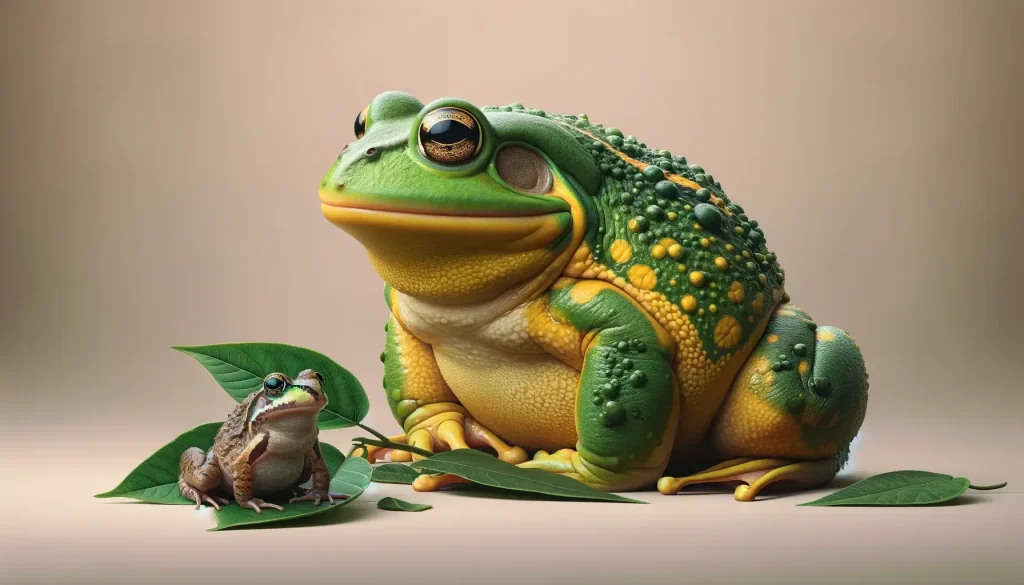
Pac Man Frog (Ornate Horned Frogs)
The Pac Man Frog is many people’s first choice when considering amphibian pets. They’re known for needing less space, making them ideal for (relatively) compact living situations. However, their eating habits and bold colors are what mostly captivate potential owners. Let’s break it down:
- Pros:
- Doesn’t require a large tank – a 10-gallon tank is sufficient.
- Vibrant colors make them a visually appealing choice.
- Voracious eaters, their diet mainly consists of crickets and occasional small mice.
- Generally diurnal, making them active during the day when most owners can enjoy them.
- Cons:
- Their “charming” aggressiveness might not be suitable for all owners, especially families with small children.
- Special care needed for feeding to avoid accidental bites.
African Bullfrog
The African Bullfrog is nothing short of a survivalist, capable of living past 50 years and enduring extreme conditions. Their remarkable resilience and capacity for large prey make them intriguing to many potential owners:
- Pros:
- Extremely resilient, able to survive harsh conditions.
- Long life span, exceeding 50 years with proper care.
- Can consume a diet that includes a variety of larger prey.
- Impressive size makes them a unique addition to any home.
- Cons:
- Requires more space as they grow, demanding a larger habitat.
- More attentive care regimen needed compared to smaller species.
Other Considerations
Other species such as Fire-Bellied Toads and Tree Frogs offer vibrant displays of color and active behaviors but come with their set of pros and cons, related to habitat requirements and diet. Dart Frogs enchant with dazzling colors and are active during the day, yet their need for high humidity and specific diets can be challenging for beginners.
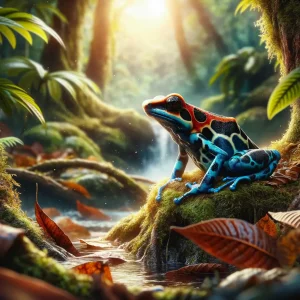

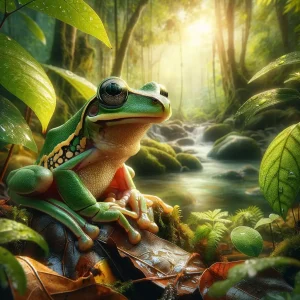
Remember, no matter your choice, understanding the needs of your pet frog is crucial. Mixing species or failing to provide the right environment can have dire consequences. And while it might be tempting to handle your fascinating new pet, remember that their well-being comes first.
Considering a pet frog requires careful thought and preparation. Whether your interest lies with the charismatic Pac Man Frog, the resilient African Bullfrog, or another species altogether, ensure you’re ready for the commitment.
Beginner Guide to Raising Quail at Home
What are the Signs of a Dog Concussion?
What Causes Your Dog’s Ears to Smell Bad?
When your dog’s ears start to emit an unpleasant odor, it might leave you puzzled…
Methimazole Treatment for Cat Hyperthyroidism
Methimazole plays a crucial role in managing feline hyperthyroidism, a condition marked by an overactive…
Got Hummingbirds in your Backyard? Here’s How to Care for Them.
Why Does Your Cat Pee Outside the Litter Box?
Cat’s Litter Box Issues It’s not uncommon for cat owners to face the frustrating dilemma…



